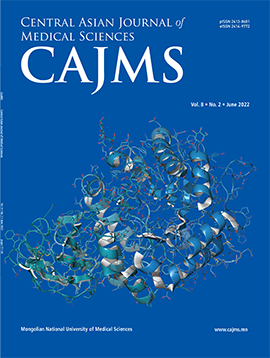Treatment Results of Definite and Probable Meniere's Disease
DOI:
https://doi.org/10.24079/cajms.2021.03.007Keywords:
Meniere's Disease, Videonystgamography, Caloric TestAbstract
Objectives: To evaluate the treatment results of definite and probable Meniere's disease (MD). Methods: A total of 51 patients, who were diagnosed with Meniere's disease (MD) between January 2019 to January 2021 at EMJJ ENT hospital's vestibular laboratory in Mongolia, was included in our study. The diagnosis of Meniere's disease was according to the 2015 Diagnostic criteria of Meniere's disease of the Classification Committee of the Barany Society. The clinical dizziness handicap inventory (DHI) questionnaire was taken, and videonystagmography (VNG), caloric test, and PTA was done in all patients. Results: Of a total of 51 patients, 9 were diagnosed as probable MD, and 42 were diagnosed as definite MD. The mean age of the patients was 43.7, male to female ratio was 1:1.8, 37 (72.5%) patients were in treatment group I who all received medication only, and 14 (27.5%) patients were in treatment group II who were refractory to prior medical therapy underwent ITDL Comparing the two treatment groups, there were significant differences in all test results (p = 0.000). After ITDI hearing improved (p = 0.000). Conclusions: VNG, caloric test, and DHI questionnaire results show that both medical treatment and ITDI are successful in improving vestibular function.
Downloads
219
Downloads
Published
How to Cite
Issue
Section
License
Copyright (c) 2021 Mongolian National University of Medical Sciences

This work is licensed under a Creative Commons Attribution-NonCommercial 4.0 International License.




